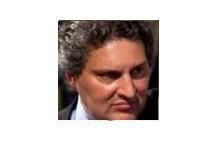
… or no CDS, where certain currencies are blocked, there are no live screen prices, no leverage, no transparency, and where your only cast-iron hedge is to sell the position.
Imagine a market where regulators are rarely seen or heard, where you don’t know for sure whether you have a compliance guy in the building, where internal risk management is gauged by how much your partners are willing to lose, where there is no email or internet.
Inconceivable? Well it wasn’t that long ago when this was exactly how the Eurobond market was – where you got by on your wits, your ingenuity, your cunning, your pioneering, innovative spirit, and your swashbuckling manner. Sounds almost romantic.
I relived the bond market’s past glories at an amazing roundtable I chaired on August 5, ahead of the publication in September of IFR’s 2,000th issue. This is an auspicious occasion, coming as it does in the Eurobond market’s 50th anniversary year, and is worthy of celebration.
I’d called my roundtable “From Eurobonds to Multi-Trillion Dollar Global DCM: Plotting the Major Milestones in the Bond Market’s Trajectory”. To discuss this heady topic, we assembled six market veterans who were all in the market before – or not long after – IFR’s launch and who after decades of deal-making are still as sharp as they come. What a panel it was:
- Cyrus Ardalan, vice-chairman of Barclays and chairman of ICMA, former Paribas capital markets head who originally joined the World Bank’ treasury team in 1974;
- Iain Baillie, a 35-year trading and capital markets veteran (Strauss Turnbull, Salomon, LBDP, Citigroup et al) and now co-CEO of his own firm Asset Match;
- Michael Dobbs-Higginson, White Weld class of 1972, an Asia specialist who worked in the upper echelons of CSFB, Merrill Lynch and elsewhere;
- Robert Gray, chairman of debt finance and advisory at HSBC who previously ran JP Morgan’s global loan syndications group and Eurobond underwriting business;
- René Karsenti, ICMA president, previously head of finance at the EIB, treasurer of the EBRD and a senior World Bank treasury official;
- Gene Rotberg an independent adviser and former Merrill Lynch EVP but who made his name as treasurer of the World Bank from 1969 to 1987.
They delivered some fantastic narrative and enthralling anecdotes. Not everyone in the market back in the day was an angel, but if there were excesses they weren’t as egregious as those of the modern-day period. Excess was made possible not by the creation of derivatives per se but more specifically when derivatives morphed from being tools for borrowers and were sequestered by banks to facilitate industrial-scale highly-leveraged speculative proprietary trading strategies fuelled by huge short-term incentives.
The Eurobond market of old could be a bit rough round the edges but it was culturally, socially and educationally diverse and it did its job.
You got by on your wits, your ingenuity, your cunning, your pioneering, innovative spirit, and your swashbuckling manner
AS AUSPICIOUS as the 2,000th issue is, IFR ironically was launched in 1974 amid a barrage of dramatically inauspicious market conditions that saw a precipitous decline in deal volumes that year. Of course, our weekly market chronicles helped propel an exponential and unstoppable increase in Euromarket activity from that point to a zenith of US$3.3trn in 2006, a year before the global financial crisis.
But looking back, 1974 was a hell of a year. IFR’s launch coincided with the end of the Arab oil embargo against the West, which saw inflation-adjusted oil prices rise vertically from around US$20 in late 1973 to a peak of over US$115 in 1979, taking gold with them (up 40% in 1974 alone).
Things were so bad that the US moved to daylight saving time four months early to save energy while the British government introduced a three-day working week and imposed blackouts. And the world entered a vicious inflationary spiral: 11% in the US; 16% in the UK; 23% in Japan.
The Vietnam War was still raging, US President Richard Nixon was embroiled in the Watergate scandal; striking coal miners toppled the British government and it was a year generally marked by political strife throughout the world. And if all of that weren’t bad enough, we had platform shoes, flares, the mullet and glam rock.
PERUSING THE HISTORICAL data, though, there’s one thing that’s been bugging me and I need an answer. And the question is this: what on earth happened to the Eurobond market in 1965? Now you have to understand that this isn’t a random question that just popped into my head; I’ve not yet succumbed to such haphazard eccentricities, even after a session on the Martinis.
Going into my roundtable discussion, I’d noted that the Eurobond market’s inaugural year of 1963 elicited a deal total volume of US$122m. That increased an amazing tenfold in year two followed by … zero, zilch, nada, not a bean in 1965. I’ve searched the world archives for clues (ie, Google and Wikipedia) but alas no mention of Eurobonds.
So I’m offering a bottle of champagne to the first person to send me via email (keith.mullin@thomsonreuters.com) a plausible explanation for the total lack of issuance in that fallow year.
Oh, and in case you were wondering, I joined IFR around issue 792 so have lived through over 92,000 of the Eurobond market’s 104,000 total deal haul accounting for US$33trn of the US$34.5trn value. For once I’m speechless…
